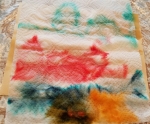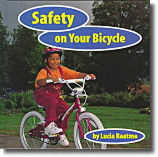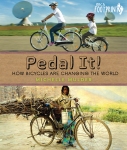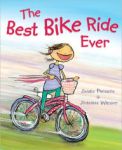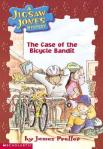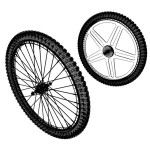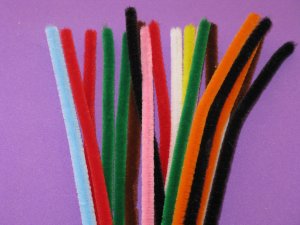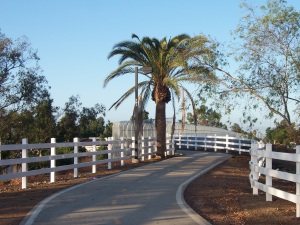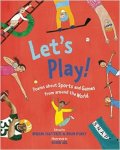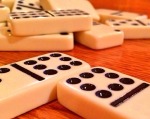This is the last week of In-Home Day Camp that I planned for my grandsons for the end of summer 2016. I’m a little late in posting Week 4 because the grands and I had so much fun during our In-home Day Camp Weeks, that I was too busy to finish this last post. Additionally, I decided to extend the Week 4 theme of water into the school year because there were so many fun activities I found that I wanted to do with the grands and one week was just not enough. So this post includes some of the activities we completed during the Week 4 day camp as well as some activities I still want to do with the grands at the beginning of the school year.
To recap this In-home Day Camp series, I started planning for these activities early in the summer although I wouldn’t be watching the grandsons again until their parents went back to work in August (school teachers). That meant I would have several weeks to watch the grands, Tigger (8), Kona (6), and Tahoe (4), before their school year started. I decided to plan four different weeks of day camp activities for them. I chose four different themes and planned activities for each of the eight Multiple Intelligences when designing each day camp.
If you would like to see the other three weeks of in-home day camp and their activities, you can find them here:
With the hot days of August, the theme of “water” seemed appropriate for some “cooling” activities for the grands for Week 4 of the day camp. Besides a trip to the beach and a “water play” day at our house, I planned art projects and experiments with water to do with them.
Week Four: Water, Water, Everywhere
The weekly schedule: Each day I will “dip into” the Read Aloud Book (see Linguistic Intelligence), and have the grands complete at least two other activities. I will choose activities so that all eight intelligences are covered by the end of this day camp unit. I will also mention any academic focus I plan on integrating into any of the activities.
Linguistic Intelligence (Word Smart)
Read and discuss books- It’s always nice to include books as part of the day camp experience. I usually get my books from the library. During the week these books can be used to go along with the theme:
Read Aloud:
 The Thing in the Sewers by Roberto Pavanello tells the story of a bat, named Echo, his three human friends, and how they solve mysteries. The mystery in this story concerns a foul smelling toxic waste that suddenly fills the pond in their local park and the town’s fountain. However, the bad smell and strange color are not the only problems with the water. Echo sees a large, slimy green arm reaching for the fish that are trying to escape from the polluted pond. (Special note: Tigger loved this book so much he read the book himself and has since read another book in this series.) Academic focus: Making Predictions: At appropriate points in the story, I will have the grands make predictions on the solution of the mystery in the story.
The Thing in the Sewers by Roberto Pavanello tells the story of a bat, named Echo, his three human friends, and how they solve mysteries. The mystery in this story concerns a foul smelling toxic waste that suddenly fills the pond in their local park and the town’s fountain. However, the bad smell and strange color are not the only problems with the water. Echo sees a large, slimy green arm reaching for the fish that are trying to escape from the polluted pond. (Special note: Tigger loved this book so much he read the book himself and has since read another book in this series.) Academic focus: Making Predictions: At appropriate points in the story, I will have the grands make predictions on the solution of the mystery in the story.
Nonfiction :
Liquid Planet: Exploring Water on Earth with Science Projects by Tammy Enz, Super Simple Things to Do with Water by Kelly Doudna, Water Wow! An Infographic Exploration by Antonia Banyard and Paula Ayer, and Explore Water! by Anita Yasuda are the four books I used to select experiments to do in this day camp with the grands. The books also provide basic information on topics as they relate to water such as density, air pressure, water cycle, weather, transpiration in plants, and waste water. While I won’t read the entire books to the grands, I will use them as reference books. Before and/or after I do some activities from the book, I will read information to explain why the experiments worked the way it did. Academic focus: Following Directions-As we work on some of the experiments, I will have the grands find the directions in the book, read them aloud (Tigger), or point to the steps as we work on them (Tahoe and Kona). Vocabulary-There are so many new vocabulary words in these books, so this will definitely be another academic focus.
Non-fiction that Read like Fiction:
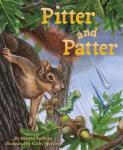 Pitter and Patter by Maratha Sullivan and illustrated by Cathy Morrison reads like a story, but can also be considered non-fiction since its focus is about explaining the water cycle using two raindrops who fall from a gray cloud. Before the drops change into a gas and become part of the gray cloud again, Pitter and Patter travel through different types of environments and say hello to the creatures they meet along their journey. This book has gorgeous illustrations and more activities in the back of the book for further investigations. Academic Focus: Vocabulary- This is a vocabulary-rich story which includes the names of many of the creatures that Pitter and Patter encounter, such as herons, crayfish, and minks, as well as the types of environments through which the drops travel: meadows, caves, streams, and wetlands.
Pitter and Patter by Maratha Sullivan and illustrated by Cathy Morrison reads like a story, but can also be considered non-fiction since its focus is about explaining the water cycle using two raindrops who fall from a gray cloud. Before the drops change into a gas and become part of the gray cloud again, Pitter and Patter travel through different types of environments and say hello to the creatures they meet along their journey. This book has gorgeous illustrations and more activities in the back of the book for further investigations. Academic Focus: Vocabulary- This is a vocabulary-rich story which includes the names of many of the creatures that Pitter and Patter encounter, such as herons, crayfish, and minks, as well as the types of environments through which the drops travel: meadows, caves, streams, and wetlands.
 Water is Water by Miranda Paul is a book that beautifully illustrates the different ways water can be seen (steam, fog, snow, rain, etc.) It is written in a rhyming verse which adds to its charm. Academic focus: Rhyming Words-After reading each page, I will ask the grands to tell me the rhyming words.
Water is Water by Miranda Paul is a book that beautifully illustrates the different ways water can be seen (steam, fog, snow, rain, etc.) It is written in a rhyming verse which adds to its charm. Academic focus: Rhyming Words-After reading each page, I will ask the grands to tell me the rhyming words.
Intrapersonal Intelligence (Self Smart)
Spray bottle Exploration: I will give each grand a chance to use a spray bottle of water and send them outside by themselves to explore. Usually the grands love to water the plants, spray the block wall fence, and spray the rock garden to see how the water reacts.
Independent Reading: I leave the library books in a convenient place for the grandsons so they can browse or read them on their own.
Journal: I will give each day camper a little booklet, and have them write or draw their favorite experiences from this day camp theme.
Logical/Mathematical Intelligence (Number/Reasoning Smart)
- Kona carefully adds drops of water onto a penny.
- Next time we do this experiment, I want Tigger to try different coins.
Drops on a Penny: I love this easy experiment on surface tension because it just requires an eyedropper (or medicine dropper), water, a penny, and a paper towel. I had the grands very slowly add drops of water onto the penny and count how many drops of water the penny would hold until the water spilled off the penny. The grands loved to do this experiment over and over. If we do this again, I think I will have them try a nickel, a dime, and a quarter and then graph their results. We can also try adding some dishwashing detergent to the water to see if it makes a difference. You can find directions for this experiment at this website:
http://www.scientificamerican.com/article/measure-surface-tension-with-a-penny/
Stretching Water: I will have the grands explore the concept of cohesion by having them “stretch” some water. Directions: Place a few drops of water (add food color to make the water easier to see) on some waxed paper. Then with a toothpick, “stretch” the water to see how far it will move before the water separates. Measure how far you were able to stretch the water before it separated. Or create a water maze such as the one found on this website:
http://teachbesideme.com/water-drop-maze/
Who is Faster? I found this experiment in the book Explore Water! Make a hole with a pin in two paper cups. Balance each one cup in a sturdy glass that has a smaller diameter than the paper cups. Fill one paper cup with hot water and place an equal amount of ice water in the other paper cup. Time each cup to see which cup will leak out all if it’s water first. (Hint: Which molecules will move faster?)
Musical Intelligence (Music Smart)
What would a day camp experience be without camp songs!? Instead of creating my own, I found several websites that have songs about water:
“Water Clear, Water Bright” is one song I plan to teach the grands. It can be found here: http://www.kididdles.com/lyrics/w067.html
Ocean and Beach Songs: Since I am also taking the grands to the beach, I wanted to teach them songs about the ocean: I found some here: http://www.preschooleducation.com/sbeach.shtml
Great Lakes Song: There are also songs about bodies of water, such as this one about the Great Lakes: http://www.songsforteaching.com/fosterbrown/greatlakesjack.htm
Water Cycle: I wanted to teach a song about the water cycle to the grands and found a really good one at this website which uses the tune “The Wheels on the Bus” to go along with the water cycle lyrics: http://www.naturallyeducational.com/2011/04/rain-songs-and-poems-for-children/
Naturalist Intelligence (Nature Smart)
As I already mentioned, part of this week’s day camp will include a day at the beach. Besides enjoying the cooler weather and water at the beach, the grands will make sand castles and collect shells (or fragments of shells.) We will collect some ocean water before we leave the beach to use later in the week in a simple experiment.
Experiment with Ocean Water: Using the ocean water that was collected during our beach trip, the grands will pour it into a square baking pan. I will have them taste the ocean water and describe it before putting the baking pan outside in the sun. After all the water is evaporated, we will see what is left in the baking pan. (Salt crystals)
 Hole in Bottle Experiment: To help explain to the grands that air pressure can prevent water from leaking out of a bottle with a hole in it, I did the “Bottled Up” experiment from the book Super Simple Things to Do with Water. Make sure to use a plastic bottle that is at least 1 liter. I tried a regular plastic bottle and it didn’t work as well. You can also find directions for a similar experiment at this website: http://magic-but-real-experiments.blogspot.com/2009/06/bottle-with-hole.html
Hole in Bottle Experiment: To help explain to the grands that air pressure can prevent water from leaking out of a bottle with a hole in it, I did the “Bottled Up” experiment from the book Super Simple Things to Do with Water. Make sure to use a plastic bottle that is at least 1 liter. I tried a regular plastic bottle and it didn’t work as well. You can also find directions for a similar experiment at this website: http://magic-but-real-experiments.blogspot.com/2009/06/bottle-with-hole.html
Water Refraction Experiment: I have not tried this one yet with the grands, but I plan to do so in the future. It is a very simple experiment requiring a bottle of water, paper, and markers. You can find it here:
http://www.lookwerelearning.com/2014/03/simple-light-refraction-experiment/
Transpiration in Plants: I will adapt the directions for Experiment 3 in the Liquid Planet book. I will have the grands discover how much water comes from one of our outdoor plants. I will have them use a plastic storage bag with a zipper closing (can also use a tie twist on a regular plastic bag) to cover some leaves from an outdoor plant. After a few hours, we will check the experiment to see if any water from the plant has accumulated in the plastic bag. (I used to do this experiment as a classroom teacher and discovered the leaves of trees worked the best.)
Spatial Intelligence (Picture Smart)
Craft projects: The grands love to do art projects, so I always have lots of activities in this intelligence.
Paper Towels and Markers: I had the grands use markers and draw a picture on a paper towel. When the picture was done, I had them spray the pictures with water and watch what happened. We talked about water absorption and why the ink from the markers had spread out on the paper towel. (I used an empty and clean spray bottle from a “green” all purpose cleaner as our water spray bottle.) This art project was adapted from another blog that I found online: http://happyhooligans.ca/paper-towel-art/
Watercolors and Oil: I still plan to do this art activity with the grands: http://babbledabbledo.com/easy-art-projects-for-kids-watercolors-oil/
Tissue Paper and Water: The grands will create pictures with tissue paper glued on construction paper, and then spray water on the picture to create an “impressionist” design. Another method for using tissue paper and water is explained here: http://theimaginationtree.com/2012/02/tissue-paper-bleeding-art.html
Interpersonal Intelligence (People Smart)
States of Matter: The grands will have to work together to demonstrate the three states of water. I will tell them that each of them represents one molecule of water. For the solid (ice), I will have them hook elbows and stand still. For liquid (water) I will have them move about freely in a small room, like the den. For the gaseous state (steam), I will allow them to run around the backyard. Afterwards we will discuss what they learned about the molecules of water in each of the three states.
Circle Storytelling: Sit in a circle and start a story. Have the day campers take turns going around the circle and contribute to the story. An example of a story starter is: “Our grandparents surprised us with a canoe so we decided to all go together for a canoe trip down the local river. At first…”
Water Play Day: Grandpa Jim and I will have the grands over to our house where they can have a “water play” party. We will set out the wading pool, water table, and super soakers for them to use together.
Bodily-Kinesthetic Intelligence (Body Smart)
Swimming: Since the grands take swim lessons once a week, I will make sure to include a day at a local pool as part of the day camp.
Chasing the Waves: At the beach we will play a game where we run toward the waves when the tide is going in, and then run from the waves as they come towards the shore.
Water Balloon Toss: Trying to catch water balloons on a hot day is good for eye-hand coordination, but also can be very cooling!
More Water Play Ideas: I plan to use some of the ideas from this website too: http://www.stillplayingschool.com/2015/04/outside-water-play-ideas-for-kids.html
I hope you are finding these Multiple Intelligence activities useful as you plan lessons for children in your care. If you would like to see more of these unit studies as I create them, you can become a follower of this blog.
I love to add my blog posts to link parties such as:








